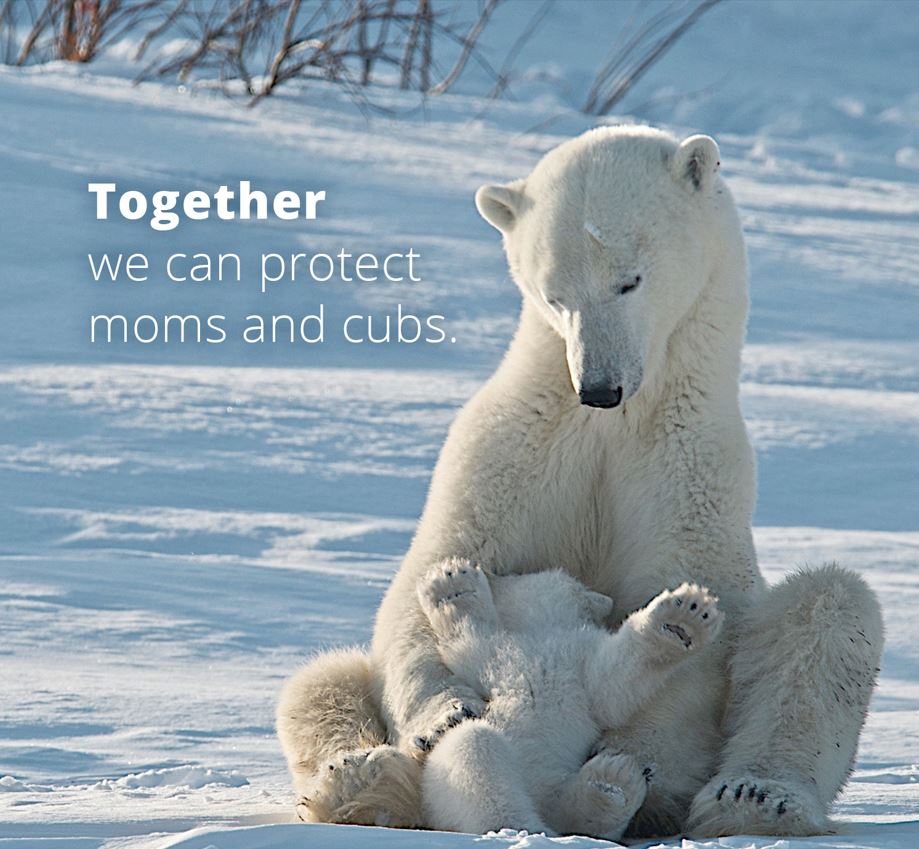Menu
Seneca Park Zoo’s Defend the Ice initiative has contributed more than $30,000 to polar bear conservation through Polar Bears International.
PBI’s Arctic Ambassador Center Network includes zoos, aquariums, and wildlife parks that share our commitment to polar bear conservation. Based in the U.S., Canada, and Europe, these centers work with PBI collaboratively on research, education, and action programs that address the challenges polar bears face in a warming Arctic.
As an Arctic Ambassador Center for Polar Bears International, we share the story of how climate change is affecting the Arctic and polar bears. Read more here.
We have had the opportunity to participate in the Climate Alliance Program hosted by Polar Bears International. Through the program, staff from SPZ learned about polar bear natural history and travelled to Churchill, Manitoba, the polar bear capital of the world. Learn a little about the experiences at the links here:
Up close with polar bears in Churchill Manitoba
Keeper Connection: National Network for Ocean and Climate Change Interpretation
Seneca Park Zoo Society has raised more than $30,000 for polar bear conservation and our partners in the field at Polar Bear International. Polar Bear International aims to protect polar bears and to help secure a future for polar bears across the Arctic.
Help us support polar bear conservation by donating now. Check back for next year’s event!
Out in their native range, only a small percentage of polar bears live past 15 to 18 years. Anoki, the polar bear that lives at the Seneca Park Zoo, turned 27 on November 20th! Happy birthday Anoki!
In winter, polar bears clean themselves with snow by rubbing their heads in it and pushing forward on their tummies and rolling on their backs.
Newborn polar bear cubs weigh about 1.3 lbs. when born! With the mother’s rich milk made of 31% fat, the cubs rapidly grow and by 3 months, weigh more than 20 lbs. Cubs will stay with their mother for just over 2 years, learning as much as possible including how to navigate sea ice, migration, hunting and how to avoid danger.
Polar bears do not hibernate like their bear relatives! Instead, it is the time that they are most productive. A polar bear will do most of their eating for the entire year while hunting out on the frozen ice.
Polar bears rely on sea ice to hunt, breed, roam and occasionally den. However, with climate change being the major cause to the loss of sea ice, we will need to significantly reduce our use of fossil fuels for energy to see a change to be able to help polar bears in the arctic.
The Seneca Park Zoo partners with Polar Bears International to raise awareness of the challenges that polar bears face in a warming artic. When you visit the Seneca Park Zoo you are helping raise awareness and funding for conservation work done by Polar Bears International!
Seneca Park Zoo’s resident Polar bear is named Anoki, which means “little snowflake”! Anoki is an amazing ambassador for artic animals facing climate change and for conservation partner, Polar Bears International.
Seneca Park Zoo partners with groups like Polar Bears International (PBI), the only organization dedicated solely to polar bear conservation. PBI exists to protect polar bears and the ice they depend on, helping to secure a future for polar bears across the Arctic. Here are just a couple of the ways they are making an impact today:
Detect to Protect – People who live and work in the Arctic tend to have polar bears on their personal radar, especially during seasons when the bears are forced ashore by melting ice, away from their seal prey. As the ice-free periods become longer and polar bears spend more time on land in more places—and for longer periods—the risk of dangerous encounters with people is increasing. Over the past few years, PBI has taken steps to address this issue. Learn more here.
Den Detection – PBI utilizes cutting edge technology known as synthetic aperture radar (SAR) to find and map polar bear dens, which allows them to help shield moms and cubs from disturbances. Learn more here.
Innovation in Tracking – Tracking devices provide vital information on polar bears, allowing researchers to understand the movement patterns and behavior of polar bears, along with other information such as habitat use, responses to changing sea ice conditions, and population boundaries. The extreme conditions of the polar bear’s natural range can make this uniquely challenging. Check out how they are working to solve this issue here.


Keep in touch with your friends at Seneca Park Zoo on this event and more! There’s always something happening at the Zoo.
Seneca Park Zoo Society is a tax-exempt 501(C)(3) nonprofit organization. Your gift is tax-deductible as allowed by law.
Seneca Park Zoo is a smoke-free facility.
Copyright © Seneca Park Zoo 2024